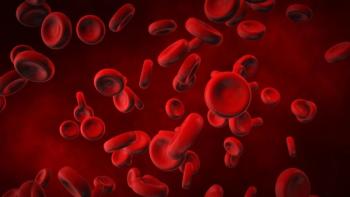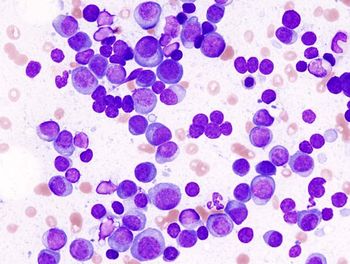
- ONCOLOGY Vol 27 No 4
- Volume 27
- Issue 4
Accelerated Partial-Breast Irradiation: Does the Evidence Stack Up?
APBI is a technique that offers women with early-stage breast cancer a choice. The preponderance of evidence supports the efficacy and safety of this technique, and it should continue to be offered to appropriately selected patients on and off protocol.
The review by Drs. Simona Shaitelman and Leonard Kim in this issue of ONCOLOGY is timely in its summary of the literature regarding accelerated partial-breast irradiation (APBI) in light of recently publicized studies. However, there are some areas of the review that we believe require further discussion and clarification.
With regard to multicatheter interstitial brachytherapy (MIB), the review notes high infection rates, citing rates of 0% to 11%. However, an analysis found an infection rate of 10.3% with whole-breast irradiation (WBI), comparable to that noted in the MIB series.[1] In addition, several clinical studies with large numbers of patients and long-term follow-up (including a matched-pair analysis of MIB and WBI at 12 years) found no differences in outcomes with brachytherapy.[2-4] When discussing single-entry intracavitary brachytherapy catheters, the review focuses on two recent claims-based analyses; the first study, by Smith et al, suggested that brachytherapy-based APBI was associated with higher rates of mastectomy as well as infectious and noninfectious complications compared with WBI.[1] A second claims analysis by Presley et al found higher rates of wound and skin complications with brachytherapy-based APBI.[5]
Significant limitations to the above studies prevent them from being practice changing: they were observational retrospective analyses with short follow-up (3.8 years and 1 year, respectively), and both had the potential for treatment-era bias (2003–2007); they also used Medicare data, which allowed for misclassification bias (ie, mastectomy coding cannot differentiate which breast was removed). Further, a billing code was used as a surrogate for clinical outcome; and no or limited information was provided on clinical factors (stage, histology, systemic therapy, etc), the quality of initial surgery (ie, margin status), and comorbidities.[6,7] In addition, it is believed that observational studies are especially prone to methodological and statistical biases that can render results unreliable.[8] In support of this opinion, Dr. Stanley Young of the US National Institute of Statistical Sciences stated that one can “troll the data, slicing and dicing it any way you want…a great deal of irresponsible reporting of results is going on.”[8] Other major issues with such studies are the assumption that association is equivalent to causality, and the lack of reproducibility. For example, two recent observational studies that used the exact same data set came to completely opposite conclusions.[8] Finally, it is interesting that one of the coauthors of the Smith et al study has previously published data demonstrating that observational studies can lead to “improbable results” and concluded that “results from observational studies of treatment outcomes should be viewed with caution.”[9] On the other hand, actual clinical data from prospective studies have found the infection rate with brachytherapy-based APBI to be < 5% and the noninfectious complication rate to be lower than that presented in either claims analysis.[10] Clearly, the majority of prospective clinical data confirm the safety and efficacy of APBI. These highly flawed observational analyses should not discourage treatment with APBI on and off protocol, particularly in light of interim analyses of the Groupe Europen de Curiethrapie and European Society for Therapeutic Radiology and Oncology (GEC-ESTRO) and National Surgical Adjuvant Breast and Bowel Project (NSABP) B-39 phase III trials, which found no such concerns with respect to toxicity or mastectomy rates for patients treated with APBI.
When discussing external beam–based APBI, the review focuses on the preliminary results of the RAPID trial (as yet unpublished data) and summarizes the discussion by noting that “these findings should be concerning to those considering offering this treatment to patients.” It must be pointed out that the RAPID trial used no boost in the WBI arm (a major factor affecting cosmesis) and further, that the cosmestic result seen in the APBI arm of the trial is consistent with the WBI results from several other studies from this group.[11] While we understand the concern based on the data presented, as well as on small single-institution series, larger series have found excellent clinical outcomes, cosmesis, and toxicity profiles with longer follow-up.[12-14] Further, interim analysis of the NSABP B-39/ Radiation Therapy Oncology Group (RTOG) 0413 phase III trial evaluating 1,386 patients receiving external beam–based APBI on protocol found no significant toxicity issues at 41 months, with a 3% rate of grade 3 or greater fibrosis.[15] Moving forward, this remains a technique that can be offered to patients on and off protocol.
When discussing intraoperative therapy (IORT), the review focuses on two studies examining the role of IORT in early-stage breast cancer; however, a recent update of the Targeted Intra-Operative Radiotherapy (TARGIT) trial did find a 2% increase in local recurrences in patients receiving IORT.[16] Further, an update of the Milan experience with IORT demonstrated higher than expected rates of local recurrence.[17] In light of these findings and technical differences, it is our opinion that IORT should not be associated with other APBI techniques and should not be used off protocol at this time. Similarly, we believe patients should not be offered proton APBI off protocol in light of limited data demonstrating comparable efficacy.
One of the key concerns regarding APBI, and brachytherapy-based APBI in particular, is the potential for increased costs. Unfortunately, previous cost analyses have looked at absolute cost differences between APBI and WBI without examining the benefits associated with APBI (toxicity profiles, quality of life); also these studies used older reimbursement rates that do not reflect rates for brachytherapy today.[18,19] A recently published study from our group more comprehensively analyzed this and found that all forms of APBI are more cost-effective than WBI delivered using IMRT-and compared with WBI delivered using 3-dimensional conformal techniques, based on a quality-adjusted life-year (QALY) analysis, brachytherapy-based APBI techniques are cost-effective (despite having higher absolute reimbursement).[20]
APBI is a technique that offers women with early-stage breast cancer a choice. The preponderance of evidence supports the efficacy and safety of this technique, and it should continue to be offered to appropriately selected patients on and off protocol. We look forward to the completion and publication of the phase III randomized trials in the years to come to further validate what has already been published; however, we believe the future should be looked to not only for validation of APBI but for the opportunity to further improve APBI techniques by continuing to shorten the treatment course and improve upon toxicity profiles.
Financial Disclosure: The authors have no significant financial interest or other relationship with the manufacturers of any products or providers of any service mentioned in this article.
References:
References
1. Smith GL, Xu Y, Buchholz TA, et al. Association between treatment with brachytherapy vs whole-breast irradiation and subsequent mastectomy, complications, and survival among older women with invasive breast cancer. JAMA. 2012;307:1827-37.
2. Strnad V, Hildebrandt G, Potter R, et al. Accelerated partial breast irradiation: 5-year results of the German-Austrian multicenter phase II trial using interstitial multicatheter brachytherapy alone after breast-conserving surgery. Int J Radiat Oncol Biol Phys. 2011;80:17-24.
3. Kaufman SA, DiPetrillo TA, Price LL, et al. Long-term outcome and toxicity in a phase I/II trial using high-dose-rate multicatheter interstitial brachytherapy for T1/2 breast cancer. Brachytherapy. 2007;6:286-92.
4. Shah C, Antonucci JV, Wilkinson JB, et al. Twelve-year clinical outcomes and patterns of failure with accelerated partial breast irradiation versus whole-breast irradiation: results of a matched-pair analysis. Radiother Oncol. 2011;100:210-4.
5. Presley CJ, Soulos PR, Herrin J, et al. Patterns of use and short-term complications of breast brachytherapy in the national Medicare population from 2008-2009. J Clin Oncol. 2012 Oct 22. [Epub ahead of print]
6. Cuttino LW, White JR, Rabinovitch R, et al. Accelerated partial-breast irradiation: trial by media or by science? Int J Radiat Oncol Biol Phys. 2012;83:1075-7.
7. Khan AJ, Vicini FA, Arthur D. Brachytherapy vs. whole-breast irradiation for breast cancer. JAMA. 2012;308:567.
8. Naik G. Analytical trend trouble scientists. Wall Street Journal [Internet]. 2012 May [cited 2013 Feb 5]. Available from:
9. Giordano SH, Kuo YF, Duan Z, et al. Limits of observational data in determining outcomes from cancer therapy. Cancer. 2008;112:2456-66.
10. Khan AJ, Arthur D, Vicini F, et al. Six-year analysis of treatment-related toxicities in patients with accelerated partial breast irradiation on the American Society of Breast Surgeons MammoSite Breast Brachytherapy registry trial. Ann Surg Oncol. 2012;19:1477-83.
11. Whelan TJ, Pignol JP, Levine M, et al. Long-term results of hypofractionated radiation therapy for breast cancer. N Engl J Med. 2010;362:513-20.
12. Jagsi R, Ben-David MA, Moran JM, et al. Unacceptable cosmesis in a protocol investigating intensity-modulated radiotherapy with active breathing control for accelerated partial-breast irradiation. Int J Radiat Oncol Biol Phys. 2010;76:71-78.
13. Hepel JT, Tokita M, MacAusland SG, et al. Toxicity of three-dimensional conformal radiotherapy for accelerated partial breast irradiation. Int J Radiat Oncol Biol Phys. 2009;75:1290-6.
14. Shah C, Wilkinson JB, Lanni T, et al. Five-year outcomes and toxicities using 3-dimensional conformal external beam radiation therapy to deliver accelerated partial breast irradiation. Clin Breast Cancer. 2012 Oct 26. [Epub ahead of print]
15. Julian TB, Constantino JP, Vicini FA, et al. Early toxicity results with 3D conformal external beam (CEBT) from the NSABP B-39/RTOG 0413 accelerated partial breast irradiation (APBI) trial. J Clin Oncol. 2011;29(suppl):Abstr S1011.
16. Vaidya JS. Targeted intraoperative radiotherapy for early breast cancer: TARGIT-A trial-updated analysis of local recurrence and first analysis of survival. SABCS 2012; Abstr S4-2. Available from:
17. Orecchia R. ELIOT trials in Milan: results. Radiother Oncol. 2012;103:S4.
18. Suh WW, Pierce LJ, Vicini FA, Hayman JA. A cost comparison analysis of partial versus whole-breast irradiation after breast-conserving surgery for early-stage breast cancer. Int J Radiat Oncol Biol Phys. 2005;62:790-6.
19. Sher DJ, Wittenberg E, Suh WW, et al. Partial-breast irradiation versus whole-breast irradiation for early-stage breast cancer: a cost-effectiveness analysis. Int J Radiat Oncol Biol Phys. 2009;74:440-6.
20. Shah C, Lanni TB, Saini H, et al. Cost-efficacy of accelerated partial breast irradiation compared with whole-breast irradiation. Breast Cancer Res Treat. 2013;138:127-35.
Articles in this issue
over 12 years ago
Oligodendrogliomas: Questions Answered, Answers Questionedover 12 years ago
The State of Prostate MRI in 2013: Into the Breachover 12 years ago
Multiparametric MRI: Standardizations Neededover 12 years ago
Management of Recurrent EOC: The State of the ArtNewsletter
Stay up to date on recent advances in the multidisciplinary approach to cancer.

















































































